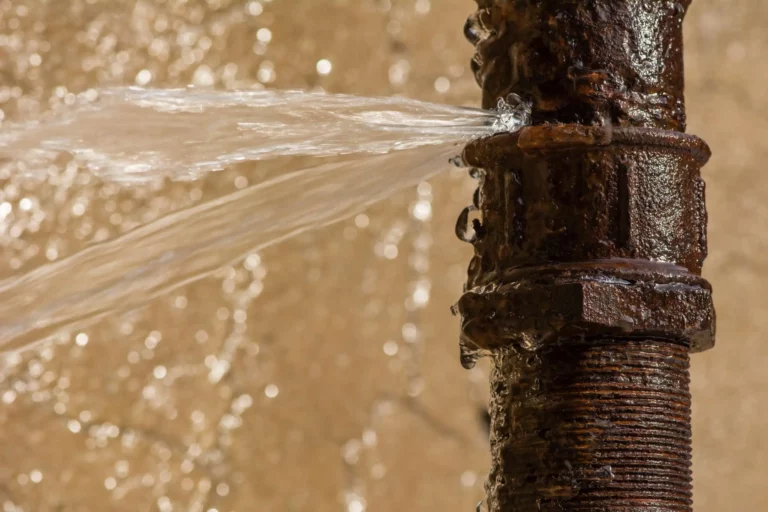Check for signs like increased water bills, mold, musty odors, water stains, and running water sounds to locate a leak. Inspect your home thoroughly and take immediate action if a leak is found. Regular maintenance and professional help can prevent extensive damage and costly repairs.
Introduction to Home Leak Detection
Dealing with a water leak in your home can be daunting. Leaks can lead to considerable damage if not detected and repaired promptly. Spotting these leaks early is crucial, as it can save you from potential water damage, incurring high utility bills, and undergoing extensive repairs. Many homeowners contact a plumbing repair company for professional leak detection and repair assistance. This all-inclusive manual will guide you in finding leaks in your home and detail the necessary steps after identifying them.
Common Signs of a Water Leak
Detecting early signs of a water leak can avert more severe issues. Key indicators include:
- Unusual Increase in Your Water Bill: A sudden spike in your bill, despite unchanged water usage habits, suggests a possible leak.
- Visible Mold or Mildew: The appearance of mold or mildew, particularly outside shower areas, indicates excess moisture from a leak.
- Musty Odors: Persistent damp or musty smells often result from mold or mildew, signaling moisture presence due to a leak.
- Water Stains on Ceilings or Walls: Discolored, yellowish patches on walls or ceilings are clear signs of a leak that may spread if untreated.
- Sound of Running Water: Hearing water running when all fixtures are off usually means a hidden leak needing immediate attention.
Promptly addressing these signs helps prevent significant damage and costly repairs.
Inspecting Your Home for Leaks
Check Your Water Meter
A straightforward way to detect leaks is by checking your water meter. Here’s how you can do it:
- Ensure all water sources in your home are turned off, including appliances and outdoor faucets.
- Record the initial water meter reading.
- Wait for about 15 to 20 minutes without using any water.
- Recheck the water meter. If the reading has altered, there may be a leak in your plumbing system.
Inspect Plumbing Fixtures
Another method to locate leaks is by closely examining your plumbing fixtures:
- Faucets and Showerheads: Look for drips or moisture around the fixtures. Over time, even small, slow drips can accumulate and waste a lot of water.
- Toilets: Toilets are common culprits for hidden leaks. Add food coloring to the toilet tank to check for leaks and let it sit for about thirty minutes. If the color seeps into the bowl without flushing, you have a leak that has to be fixed.
Evaluate Appliances
Home appliances that use water can also be sources of leaks. Regular checks can prevent significant issues:
- Dishwashers: Inspect around the base for any signs of water pooling or moisture. A damaged door seal often causes leaks.
- Washing Machines: Look for damp spots or pooled water around your washing machine Philippines. Hoses and connections can wear over time and become sources of leaks.
- Water Heaters: Check for any water around the base of your water heater. Corrosion or sediment buildup can lead to leaks.
Locating Hidden Leaks
Sometimes, leaks aren’t only occasionally visible and require more detective work to locate. Here are some advanced techniques:
- Check for Soft Spots: Go around your home and press on walls, ceilings, and floors to identify soft or spongy areas. These soft spots can indicate water damage from a hidden leak.
- Use a Moisture Meter: A moisture meter is valuable for detecting areas with higher moisture levels. These devices can help determine whether sections of your home are harboring a hidden leak.
- Thermal Imaging: Employing a thermal imaging camera can reveal temperature differences caused by moisture accumulation. For more in-depth information on using thermal imaging for leak detection, visit this thermal imaging guide.
Taking Immediate Action
If you discover a leak, acting quickly to minimize damage is crucial. Here are the immediate steps you should take:
- Shut Off the Water Supply: If you have a significant leak, immediately shut off the main water supply to prevent further damage. Knowing where your home’s main water shutoff valve is located is imperative in emergencies.
- Contact a Professional: Some leaks require professional intervention. Plumbers can identify and repair hidden leaks efficiently. For more tips, check out these guidelines on fixing leaks. Hiring a professional ensures the job is done correctly, thus preventing future issues.
- Document the Damage: Take photos and keep records of any damage, which can be helpful if you need to file an insurance claim. Proper documentation can speed up the process and ensure you get adequate compensation.
Preventing Future Leaks
When it comes to leaks, prevention is preferable to treatment. It takes routine maintenance to stop leaks in the future. Here’s what you can do:
- Inspect Plumbing Regularly: Make it a habit to regularly inspect exposed pipes in basements, crawl spaces, and under sinks. Look for any indications of corrosion or wear and tear.
- Replace Old or Damaged Fixtures: Outdated or worn-out plumbing fixtures are more susceptible to leaks. Replace these fixtures to prevent leaks before they start.
- Use Water-Saving Devices: Water-saving devices such as low-flow showerheads and faucets conserve water and reduce the strain on your plumbing system, lessening the chances of leaks.
- Schedule Professional Inspections: Consider scheduling periodic plumbing inspections by professionals, like this Augusta plumber (if you happen to reside there), for example. These inspections can catch potential problems early and keep your plumbing system in shape.
Conclusion
Finding a leak in your home can be stressful, but you can manage it effectively with the proper knowledge and approach. By learning to recognize the signs of a leak, conducting thorough inspections, and taking immediate action, you can minimize damage and avoid expensive repairs. When necessary, regular maintenance and professional assistance can safeguard your home from the negative impact of water leaks.
